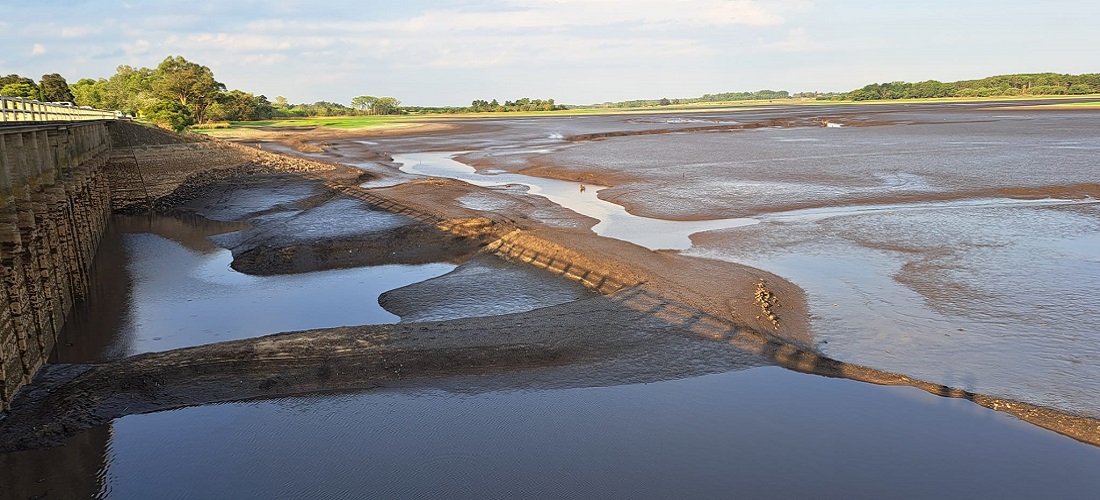
Extreme weather to persist in 2025, raising concerns for agribusiness
Dec, 27, 2024 Posted by Gabriel MalheirosWeek 202450
After a year marked by severe weather causing human and economic losses across Brazil, forecasts suggest no relief in 2025. Once again, agriculture is expected to bear the brunt as meteorologists predict prolonged droughts interspersed with intense rainfall, coupled with above-average temperatures. These conditions could significantly impact crops like soybeans and corn, particularly in the South and Northeast regions.
Rio Grande do Sul remains the most vulnerable state. According to Gilvan Sampaio, meteorologist and researcher at Brazil’s National Institute for Space Research (INPE), a combination of Atlantic Ocean warming and the onset of a weak La Niña in early 2025 may exacerbate drought conditions in the state during the first months of the year.
“La Niña is expected to last until February, though it will be mild. Its main influence will likely be slightly below-average rainfall in Rio Grande do Sul at the beginning of the year,” Mr. Sampaio explained. He noted that the global trend of rising temperatures is directly affecting planting and harvesting cycles.
Ana Maria Heuminski de Avila, agrometeorologist at Unicamp’s Center for Meteorological and Climate Research Applied to Agriculture (CEPAGRI), agrees that La Niña will be weak and short-lived but warns it could still pose risks for farmers in Rio Grande do Sul. “The South may face dry spells with intense solar radiation. Just a week without rain and high temperatures can significantly impact crops,” she said.
The soybean planting season for the 2024/25 harvest in Rio Grande do Sul is expected to conclude by mid-January. According to a report from Emater/RS released on Thursday, planting has already reached 96% of the projected 6.811 million hectares in the state. While crops are developing well overall, concerns remain for early-planted soybeans, which are now flowering and have faced irregular rainfall in December. For corn, another key crop in the state, planting has reached 95% of the estimated 748,511 hectares.
The U.S. National Oceanic and Atmospheric Administration (NOAA) predicts a higher likelihood of La Niña persisting between December 2024 and February 2025, transitioning to neutral conditions by March through May.
The Amazon region, which suffered severe drought in 2024, is also expected to see extended dry spells next year. INPE data indicate that the Atlantic Ocean will likely remain warm, bringing rainfall to northern parts of the Amazon but leaving southern and southwestern areas, which have faced drought since August, dry. “We’ll experience further droughts in southern and southwestern Amazonia, though their intensity depends on the evolution of the North Atlantic. It’s too early to say for certain,” Mr. Sampaio noted.
In the Center-West region, rainfall patterns are expected to remain more consistent, though the area’s reliance on Amazonian moisture remains critical. Even with more rainfall, higher temperatures are expected to persist, potentially affecting grain production.
Historical data show the Cerrado is becoming hotter and drier, according to Jean Ometto, a researcher at INPE and coordinator of the Adapta Brasil program. He emphasized the need for farmers to adapt to the changing climate. “In the 1990s, producers could rely on predictable planting and harvesting schedules. That’s no longer the case. Tropical agriculture must recognize there’s no longer a climate norm. It’s undeniably getting hotter,” Mr. Ometto said.
Adaptation strategies such as water conservation systems, irrigation, and crop diversification are essential for maintaining competitiveness, Mr. Ometto added. He sees 2025 as another year with significant agricultural losses, especially in vulnerable areas like Rio Grande do Sul.
In the Northeast, INPE forecasts continued high temperatures, which will increase evaporation demand. With limited soil moisture, the region cannot sustain additional atmospheric humidity. This trend will likely exacerbate aridity in areas like southern Piauí, western Pernambuco, and southern Ceará, where the caatinga biome risks transitioning into semi-arid or desert-like conditions.
Given these irregular weather patterns, Ms. Avila advises farmers to diversify both crops and planting schedules. “At any moment, droughts or heat waves could strike, directly impacting soybeans, corn, rice, and beans. These crops have specific planting windows, so diversifying varieties and schedules is crucial,” she said.
Practices like no-till farming can mitigate the effects of heavy rains and prolonged droughts, Ms. Avila added. Mr. Ometto also stressed the importance of developing seeds resistant to extreme weather conditions. “We need to focus on crops adapted to high temperatures, intense rainfall, and dry spells,” he concluded.
By Marcos Fantin, Globo Rural
Source: Valor International
-
Economy
Oct, 01, 2024
0
Egypt’s exports to Brazil triple after agreement
-
Ports and Terminals
Jul, 11, 2024
0
Port of Montevideo sets record for container throughput in first half of 2024
-
Coffee
Nov, 12, 2021
0
Instant coffee exports down; difficulties expected into 2022
-
Ports and Terminals
Jul, 10, 2024
0
Filipino Crew Member Diagnosed with Malaria in Port of Santos



